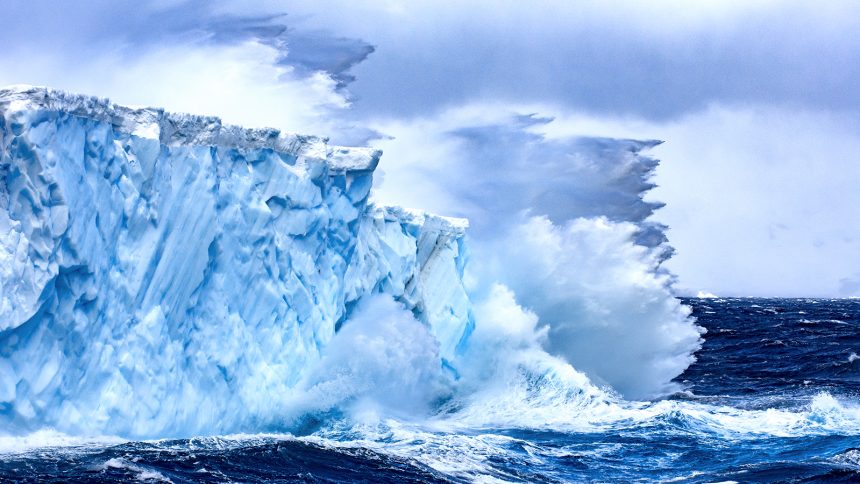Three million years ago, the atmosphere’s carbon-dioxide levels weren’t so different from those of today, but sea levels were dozens of meters higher. Today, satellite data show that the Antarctic ice sheets are melting rapidly, leading to a rise in sea levels. Scientists are puzzled as their climate models fail to fully capture this phenomenon.
“Lots of people have been scratching their heads trying to figure out what is missing from our ice sheet models,” said Alex Bradley, an ice dynamics researcher at the British Antarctic Survey.
This week, two new papers in the journal Nature shed light on the incomplete picture presented by climate models regarding the rapid deterioration of Antarctica. One study revealed that more meltwater could be affecting ice shelves than previously estimated. Another study identified a potential tipping point where warming ice is causing the ice to melt from underneath.
Antarctica’s ice is under threat from various angles, yet these dynamics are not fully integrated into climate models, potentially underestimating future sea level rise. The identified tipping point focuses on the grounding line, where the ice shifts from land to sea, speeding up the flow of ice when warmer waters erode the base.
While the tides and melting interact to affect glaciers, some, like Thwaites Glacier, may be more vulnerable to tidal pumping than melting. The collapsing of ice shelves, acting as plugs, can result in accelerated ice flow into the ocean. This collapse could be caused by meltwater that forms ponds on the ice shelves under the sun’s heat, leading to their weakening and eventual fracture.

Recent research is uncovering crucial aspects of Antarctica’s ice dynamics, helping to refine climate models and enhance predictions of sea level rise. The melting of ice shelves due to meltwater is a critical factor that models need to encompass for more accurate projections.
Rebecca Dell, who studies meltwater effects on ice shelves, sees the ongoing research as pieces of a puzzle coming together to provide a more comprehensive understanding of Antarctica’s changing ice dynamics.






